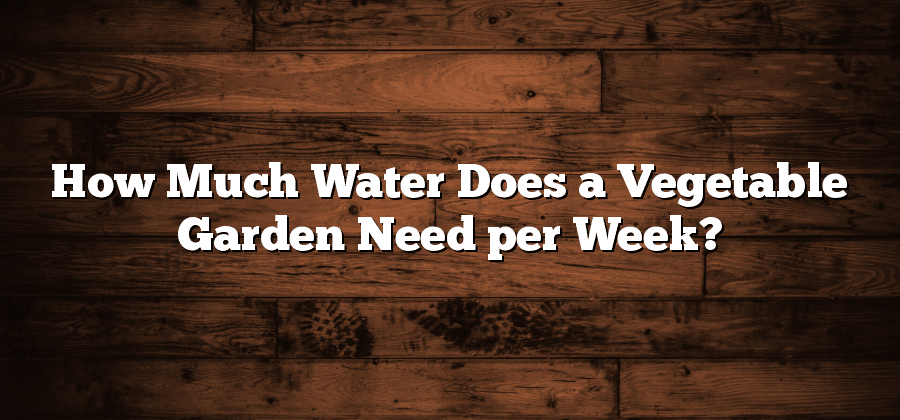Understanding the Water Needs of Different Vegetables
Vegetable gardening is a rewarding pursuit, but it requires careful attention to the individual water needs of different plants. One of the key factors to consider is the specific vegetable species you are growing. Each type has its own requirements when it comes to water, depending on factors such as the size and depth of its root system, the stage of growth, and the climate it thrives in.
Leafy greens, such as lettuce and spinach, generally require more frequent watering due to their shallow root systems. On the other hand, root vegetables like carrots and radishes need consistent moisture but can tolerate slightly drier conditions. Fruit-bearing plants like tomatoes and peppers generally require more water as they approach maturity to support the development of their fruits. By understanding the unique water needs of different vegetables, you can effectively tailor your watering practices to ensure optimal growth and productivity in your garden.
Factors Affecting Water Requirements in Vegetable Gardens
When it comes to watering your vegetable garden, understanding the factors that affect water requirements is crucial. One of the primary factors is the type of vegetable you are growing. Different vegetables have varying water needs, with some requiring more water than others. For example, leafy greens like lettuce and spinach typically need more frequent watering compared to root crops such as carrots or beets.
Another factor to consider is the stage of growth of your vegetables. Young seedlings and transplants require more frequent watering to establish strong root systems, while mature plants generally need less water. Keep in mind that plants in their flowering and fruiting stages may have higher water requirements to support their reproductive processes.
In addition, environmental factors play a significant role in determining the water needs of your vegetable garden. The temperature, humidity levels, and prevailing weather conditions can all affect how quickly the soil dries out. Hot and dry climates will generally require more frequent watering, while cool and moist conditions may allow for less frequent watering.
By understanding these factors and observing your plants’ behavior, you can tailor your watering schedule to meet the specific water requirements of your vegetable garden. This knowledge will help you establish a healthy and thriving garden while conserving water effectively.
Assessing Soil Moisture Levels in Your Garden
To ensure the health and productivity of your vegetable garden, it is crucial to regularly assess the soil moisture levels. Proper moisture levels are essential for seed germination, root growth, and overall plant hydration. To assess the soil moisture, start by inserting your finger or a soil moisture probe about two inches deep into the soil. If the soil feels slightly moist and sticks together when squeezed, it indicates adequate moisture levels. Conversely, if the soil feels dry and crumbles easily, it is a sign that the plants may require more water.
Keep in mind that different vegetables have varying water requirements. Some vegetables, such as lettuce and spinach, prefer slightly higher moisture levels, while others like tomatoes and peppers thrive with less frequent watering. Therefore, it is essential to consider the specific needs of each vegetable in your garden. Regularly monitoring and assessing the soil moisture levels will enable you to adjust your watering schedule accordingly, thus providing optimal conditions for your vegetables to flourish.
Determining the Optimal Watering Schedule for Your Vegetable Garden
In order to determine the optimal watering schedule for your vegetable garden, it is important to consider several key factors. First and foremost, you need to assess the specific water requirements of the vegetables you are growing. Different vegetables have varying water needs, with some requiring more frequent watering than others. Understanding these differences will help you establish an effective watering schedule that promotes healthy growth and prevents over or under-watering.
Another factor to consider when determining your watering schedule is the climate and weather conditions in your area. In general, vegetable gardens require more water during hot and dry periods, while less water is needed during cooler and wetter seasons. Monitoring the weather forecast and adjusting your watering schedule accordingly can help ensure that your plants receive the appropriate amount of moisture and avoid unnecessary stress. By taking into account the specific water requirements of your vegetables and the prevailing climate conditions, you can develop an optimal watering schedule that supports the overall health and productivity of your vegetable garden.
Effective Watering Techniques for Vegetable Gardens
One of the most important aspects of maintaining a successful vegetable garden is ensuring proper watering techniques. With the right watering methods, you can help your vegetables grow to their full potential and produce abundant yields. Here are a few tips to help you effectively water your vegetable garden.
Firstly, it is crucial to water your vegetable garden deeply and infrequently. Instead of giving your plants a light sprinkle every day, water them deeply once or twice a week. This will encourage the roots to grow deeper into the soil, making the plants more resilient to drought conditions. Additionally, when you water deeply, the water reaches all parts of the root system, ensuring that your plants receive the necessary nutrients. Remember to use slow, steady watering techniques to allow the water to penetrate the soil thoroughly. By following these watering techniques, you can promote healthy growth and strong root development in your vegetable garden.
• Water deeply and infrequently, rather than giving plants a light sprinkle every day
• Aim to water once or twice a week
• Deep watering encourages root growth and makes plants more resilient to drought conditions
• Ensure the water reaches all parts of the root system for optimal nutrient absorption
• Use slow, steady watering techniques to allow water to penetrate the soil thoroughly






